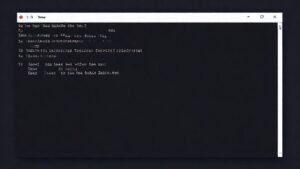Nepal Protest Regime Change: Gen Z Uprising, Media, and the Beijing Factor
- THE MAG POST

- Sep 10
- 6 min read

Nepal protest regime change remains a volatile topic for scholars and observers examining how digital platforms reshape political life in transitional democracies. The 2025 episode links youth-led mobilization, corruption scandals, and a sweeping debate about Beijing's influence, challenging conventional wisdom about the means and meaning of political upheaval.
Across Nepalese streets and screens, citizens test the limits of online organizing, state power, and international narratives. The piece traces how social media, policy shifts, and economic strain intersect to create pressure points that can trigger or deflect regime-changing dynamics, inviting readers to weigh agency against circumstance.
Rethinking Regime Change Narratives in South Asia
Power plays in the region rarely conform to neat scripts, and Nepal's experience illustrates how global theories meet local realities.
Historical Patterns and Propaganda
From Cold War era playbooks to today's digital ecosystems, regime-change talk travels through media as much as streets. In South Asia, external backers mingle with internal grievances, weaving narratives that can loosen the legitimacy of incumbents while accommodating reform-minded actors. The result is a spectrum rather than a single outcome.
Propaganda can catalyze action, but it can also misdirect energy. The Nepal context shows that history, socioeconomic stress, and governance gaps often pick the moment, magnifying pressure on leaders. When outside voices assert control over tempo, observers should still weigh domestic legitimacy and policy reform as decisive factors.
Reality vs. Conspiracy Theories
Online forums swarm with theories about hidden hands steering protesters. Yet analysis frequently reveals decentralized, bottoms-up participation: students, workers, and teachers who face inflation, unemployment, and corruption, organizing through peer networks. These dynamics resist simple scripts of manipulation, even as misinformation spreads.
Rigorous assessment relies on data: protest turnout, injuries, policy concessions, and institutional responses. When censorship is imposed and violence erupts, the risk grows that observers attribute events to a single conspirator, ignoring the everyday grievances that drive people to demand accountability.
Nepal's Political Trajectory: From Monarchy to a Digital City
Nepal's leap from monarchy to republican governance occurred in a noisy, quickly changing media environment where symbols matter and policy lags behind expectations.
Monarchy to Republic: A Turbulent Transition
The abolition of the monarchy in 2008 did not end political contest; it reallocated loyalties, disrupted established power centers, and heightened contestation among reformist and left-leaning forces. Entropy within coalition politics increased as regional and caste interests pressed for inclusion, while governance capacity lagged behind reform rhetoric.
As new parties vied for legitimacy, corruption scandals and nepotism narratives intensified public distrust. The rapid turnover of prime ministers during the late 2010s and 2020s reflected a fragile consensus and the difficulty of translating popular support into stable, policy-driven governance.
Nepo Babies and the Discourse of Access
The Nepo Babies debate framed elite access as a moral challenge, tying familial privilege to political outcomes. When student protests articulated youth grievances, the contrast between luxury and hardship sharpened calls for transparency.
The discourse interacted with broader reform demands: merit-based opportunities, anti-corruption measures, and accountable governance. In this light, the Nepo Babies narrative functioned as a proxy for evaluating who benefits from the political system and who bears the costs.
Gen Z Mobilization: Social Media as a Double-Edged Sword
Digital natives rework protest playbooks, leveraging platforms to coordinate, spotlight corruption, and pressure authorities. Yet the same tools can amplify state limits and distort perceptions of legitimacy.
From TikTok to the Street: Digital Rebellions
Digital natives use short-form media to crystallize demands, broadcast perceived injustices, and sustain momentum between street actions. Platforms enable rapid coordination across cities, but they can also oversimplify complex grievances and accelerate trolling as a substitute for policy debate.
The 2025 censorship episode tested resilience: activists learned to navigate restrictions, deploy VPNs, and maintain offline gatherings that kept pressure on officials. It also exposed how audiences split over fairness, privacy, and the legitimacy of digital mobilization.
Censorship, Ban, and Backlash
State attempts to silence platforms can backfire, triggering international condemnation and domestic sympathy for protesters. The Nepal case illustrates how selective enforcement can undermine legitimacy and fuel distrust in institutions.
In the long term, regulators must balance public order with freedom of expression, ensuring emergency measures do not erode democratic norms. The Gen Z generation may become more adept at mobilizing under constraints, recalibrating how power is negotiated.
Geopolitics of Influence: Beijing, Delhi and the Wobble of Democracy
External powers shape domestic debates through aid, trade, and policy, and local actors navigate with limited room to maneuver.
China's Regulatory Approach and Regional Leverage
China's regulatory approach, economic leverage, and online governance models have carved a footprint in Nepal and neighboring states, influencing how the regime-change debate unfolds. Beijing emphasizes stability, development, and aligned governance, which can temper expectations for rapid democratic reforms amid rising popular frustration.
Regional influence also comes through infrastructure projects, loan terms, and regulatory regimes for digital platforms. When local authorities weigh these incentives against public accountability, the outcome can tilt toward negotiated settlements rather than revolutionary upheaval.
Western Responses and the 'Rules-Based' Order
Western actors invoke human rights and the rules-based order while balancing strategic interests and regional stability. Statements matter, but aid, sanctions, and military cooperation often determine whether protests gain international support or fade into domestic policy debates.
The Nepal case shows that external framing may lag behind on-the-ground realities, and that sovereignty remains a lived practice. Observers should distinguish principled advocacy from instrumental diplomacy as events unfold.
Lessons for Citizens and Observers
The case offers a structured lens to assess protests, governance, and information ecosystems.
It invites readers to scrutinize claims, demand transparency, and recognize the limits of external narratives when evaluating regime-change dynamics.
What Regime Change Means for Everyday Life
When regimes are debated in parliament and on social feeds, the everyday cost of upheaval becomes visible in prices, services, and trust. People notice how corruption cases, policy delays, and bureaucratic inertia shape the rhythm of daily life, turning abstract debates into tangible concerns. This is where political theater meets ordinary survival.
Citzizens learn to translate slogans into demand-driven reforms: anti-corruption measures, merit-based opportunities, and better public goods. The most enduring changes come not from dramatic spectacles but from sustained governance improvements that build confidence, reduce volatility, and align political incentives with people’s actual needs.
Best Practices for Analyzing Protests
Analysts should triangulate data from multiple sources: official statistics, independent reporting, and witness accounts. Recognizing bias, filtering misinformation, and verifying claims are essential before drawing conclusions about motives or outcomes. This disciplined approach helps separate signal from noise in chaotic moments.
Judicious observers distinguish sustained reform from episodic spectacles, track policy changes, and hold institutions to account for corruption and governance gaps. By building methodological literacy, readers contribute to more informed public discourse and healthier democratic processes.
Key Takeaways
Bottom Line
The central lesson from Nepal's upheaval is that digital-era politics amplifies both civic energy and vulnerabilities. Legitimate reform rests on credible institutions, transparent governance, and inclusive opportunity, not merely on the speed or spectacle of protests. External rhetoric must meet domestic realities with honesty and accountability.
Beyond rhetoric, resilience requires robust anti-corruption mechanisms, sustained policy delivery, and channels for ordinary citizens to shape outcomes. When those elements align, protests evolve into durable governance that improves daily life and narrows the gap between promise and performance.
Forward Look
Future protest movements will hinge on how well institutions respond to grievances, manage information, and deliver results that touch daily life. The Nepal example suggests that legitimate transition emerges from steady reforms, citizen engagement, and responsible leadership rather than dramatic breakthroughs alone.
Observers should monitor policy shifts, governance reforms, and economic improvements as signals of authentic transition. The blend of digital activism with accountable governance offers the most promising path toward sustainable change in complex, multi-actor environments.
Theme | Summary |
Rethinking Regime Change Narratives | Explores how narratives around regime change mingle history, propaganda, and real-world events in South Asia, with Nepal as a focal point for both organic dynamics and external framing. |
Nepal's Political Trajectory | From monarchy to republic amid corruption and Nepo Babies discourse, highlighting political instability and reform challenges. |
Gen Z Mobilization | Digital activism, social media bans, and youth-led protests illustrating both opportunity and risk in online-to-offline mobilization. |
Geopolitics of Influence | Beijing and Western responses shape regional narratives and governance choices, testing sovereignty and legitimacy. |
Lessons for Citizens | Media literacy, transparency, and inclusive governance emerge as core requirements for meaningful reform. |






















































Comments